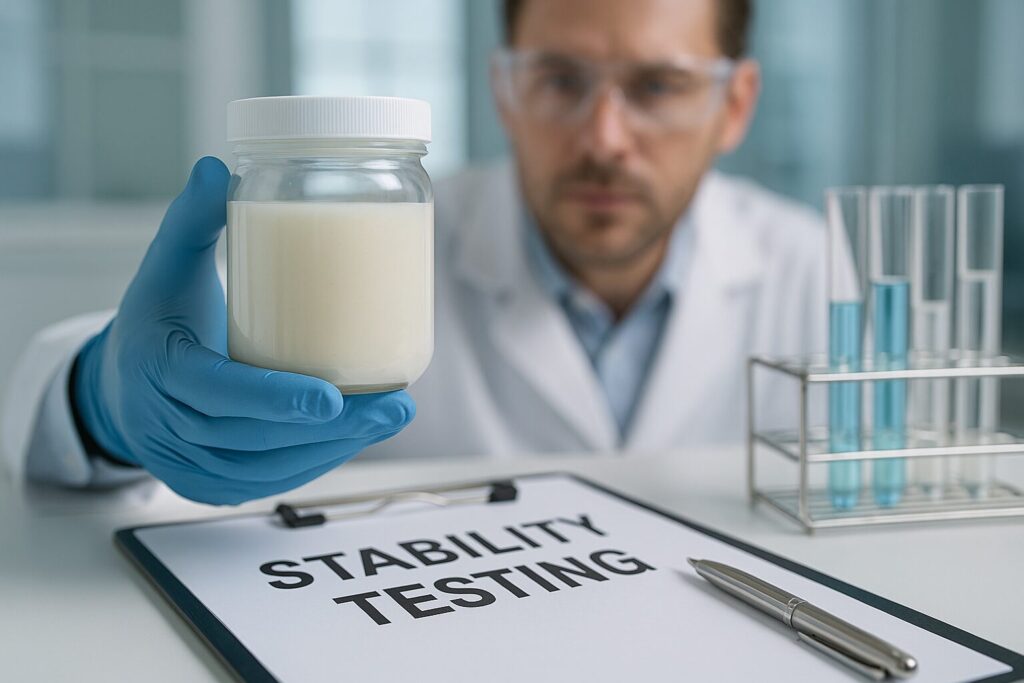Stability testing is a critical step in the development of pharmaceutical, nutraceutical, and cosmetic products. It ensures that products maintain their safety, quality, and efficacy throughout their shelf life under varying environmental conditions. For companies looking to sell globally, following the International Council for Harmonisation (ICH) guidelines is not just advisable—it is essential. These globally accepted standards streamline regulatory approvals, reduce redundancies in testing, and create a level playing field for product quality expectations worldwide.
In this comprehensive guide, we break down the ICH stability testing framework, outline the core requirements, and provide practical insights to help manufacturers comply efficiently and effectively with these vital regulatory expectations.
What is the ICH and Why Does It Matter?
The International Council for Harmonisation of Technical Requirements for Pharmaceuticals for Human Use (ICH) is a collaborative effort between regulatory authorities and the pharmaceutical industry. Established in 1990, the ICH’s goal is to harmonize the technical and scientific standards involved in pharmaceutical product development and registration. Its guidelines are developed through a rigorous process involving experts from the U.S. FDA, European Medicines Agency (EMA), and Japan’s PMDA, among others.
Following ICH guidelines matters because it promotes a unified regulatory process that helps manufacturers reduce duplicate testing across multiple countries. This harmonization is essential for businesses targeting international markets. Products that adhere to ICH requirements are more likely to gain swift regulatory approval and consumer trust. The full set of ICH stability guidelines is available at the ICH website.
Key ICH Guidelines for Stability Testing
Several core documents provide the foundation for ICH-aligned stability testing:
- ICH Q1A(R2): General guidance on the stability testing of new drug substances and products.
- ICH Q1B: Photostability testing to determine light sensitivity.
- ICH Q1C: Testing for new dosage forms not covered in Q1A.
- ICH Q1D: Bracketing and matrixing study designs for more efficient testing.
- ICH Q1E: Statistical evaluation and interpretation of stability data.
Each of these documents builds a foundation for a comprehensive testing strategy and is applicable depending on product type and market intent.
Stability Testing Conditions According to ICH
ICH guidelines define standard conditions for long-term, intermediate, and accelerated testing. These are based on the climate zone of the target market:
- Long-term conditions: 25°C ± 2°C / 60% RH ± 5% RH
- Intermediate conditions: 30°C ± 2°C / 65% RH ± 5% RH
- Accelerated conditions: 40°C ± 2°C / 75% RH ± 5% RH
Testing should be conducted in the product’s final packaging to assess its integrity, safety, and efficacy throughout its shelf life. Sensitive products may require additional studies, such as low humidity, freeze-thaw cycles, and light exposure, depending on the formulation’s vulnerability to environmental factors.
ICH Stability Testing Time Points
The consistency of a product over time is measured at scheduled intervals. Common time points include:
- Long-term: 0, 3, 6, 9, and 12 months (extendable to 24 or 36 months for shelf-life claims)
- Accelerated: 0, 3, and 6 months
These intervals allow for predictive modeling and real-time verification of a product’s behavior. If degradation is observed in accelerated conditions, intermediate testing is required to bridge the data and determine whether the product is still within specification.
Shelf Life and Retest Period Determination
According to ICH Q1E, shelf life and retest periods are derived through statistical analysis of stability data. A minimum of three production batches should be evaluated using validated methods to ensure accuracy. Linear regression models are typically employed to project the expiration date based on the trend and variability of stability-indicating parameters such as potency, degradation products, pH, and physical appearance.
A well-constructed statistical evaluation strengthens the product’s data package, making it more robust and acceptable to global regulatory bodies.
Special Considerations: Photostability and Packaging
Under ICH Q1B, photostability studies are essential for products that may be exposed to light during manufacturing, storage, or transport. Products must be exposed to both UV and visible light under controlled laboratory conditions, then analyzed for changes in chemical structure or physical characteristics.
Packaging compatibility studies also help determine whether the container contributes to degradation or preserves product integrity. For example, moisture ingress in a bottle with an inadequate seal can cause premature failure, while clear bottles may allow harmful light exposure. All these factors are examined during a comprehensive stability assessment.
Best Practices for ICH-Compliant Stability Testing
To meet ICH expectations, manufacturers should:
- Use validated, stability-indicating analytical methods.
- Select batches that reflect real-world production processes.
- Store samples in temperature- and humidity-controlled chambers.
- Continuously monitor conditions with calibrated sensors.
- Document everything from protocols to anomalies meticulously.
Following these best practices improves confidence in your data and helps avoid deficiencies flagged during regulatory audits.
Common Pitfalls to Avoid
Despite the clear guidance, manufacturers often fall short due to avoidable mistakes:
- Using development batches instead of production-scale lots
- Neglecting real-time and intermediate data collection
- Skipping photostability or packaging interaction assessments
- Failing to follow-up with statistical modeling and justification
Avoiding these pitfalls improves the predictability of product performance and minimizes regulatory setbacks.
ICH Guidelines and Cosmetic Products
While ICH guidelines are not mandated for cosmetics, they are often adopted in the personal care sector—especially for products that make therapeutic or functional claims, contain actives, or target sensitive populations. Regulatory professionals, especially in companies operating internationally, increasingly align their protocols with ICH to ensure defensible safety assessments.
Cosmetic manufacturers can benefit by integrating ICH principles with ISO and FDA GMP standards. For a practical overview of cosmetic-specific testing, Qalitex offers customized lab solutions to match ICH-inspired quality standards.
Global Regulatory Impact
Following ICH guidelines strengthens your product’s position in both regulated and emerging markets. Countries within the ICH network, including the U.S., Canada, EU nations, Japan, and Switzerland, require or strongly prefer data generated under ICH standards. Even non-member countries increasingly accept such data as part of regulatory filings.
For companies pursuing global expansion, ICH compliance is more than a formality—it’s a competitive advantage.
Conclusion
The ICH stability testing guidelines provide a globally harmonized standard for demonstrating product safety, quality, and consistency. Whether you’re launching a new drug, supplement, or active cosmetic, integrating ICH-compliant stability testing can streamline global market entry and foster regulatory trust.
Working with a lab well-versed in ICH documentation and protocol design ensures you collect the right data the first time. To learn how Qalitex supports brands in achieving ICH-aligned compliance, contact us at qalitex.com/contact.
FAQs on ICH Guidelines for Stability Testing
What does ICH stand for in stability testing?
ICH stands for the International Council for Harmonisation of Technical Requirements for Pharmaceuticals for Human Use. It harmonizes regulatory practices across major global markets.
Are ICH guidelines legally binding?
While not laws themselves, ICH guidelines are adopted into national regulations by participating countries, making them de facto legally binding in most jurisdictions.
How is shelf life determined under ICH?
Shelf life is determined based on statistical analysis of real-time and accelerated stability data gathered in accordance with ICH Q1A(R2) and Q1E.
Do cosmetics need to follow ICH stability guidelines?
Cosmetics are not legally required to follow ICH, but many manufacturers voluntarily adopt the standards to meet international safety expectations and elevate product quality.
What’s the difference between real-time and accelerated testing?
Real-time testing reflects actual storage conditions over time. Accelerated testing exposes the product to elevated temperatures and humidity to predict long-term behavior more quickly.
For pharmaceutical, nutraceutical, and advanced cosmetic products, ICH-aligned stability testing offers a proven path to quality, trust, and global success. Let Qalitex help you build your regulatory confidence today.





